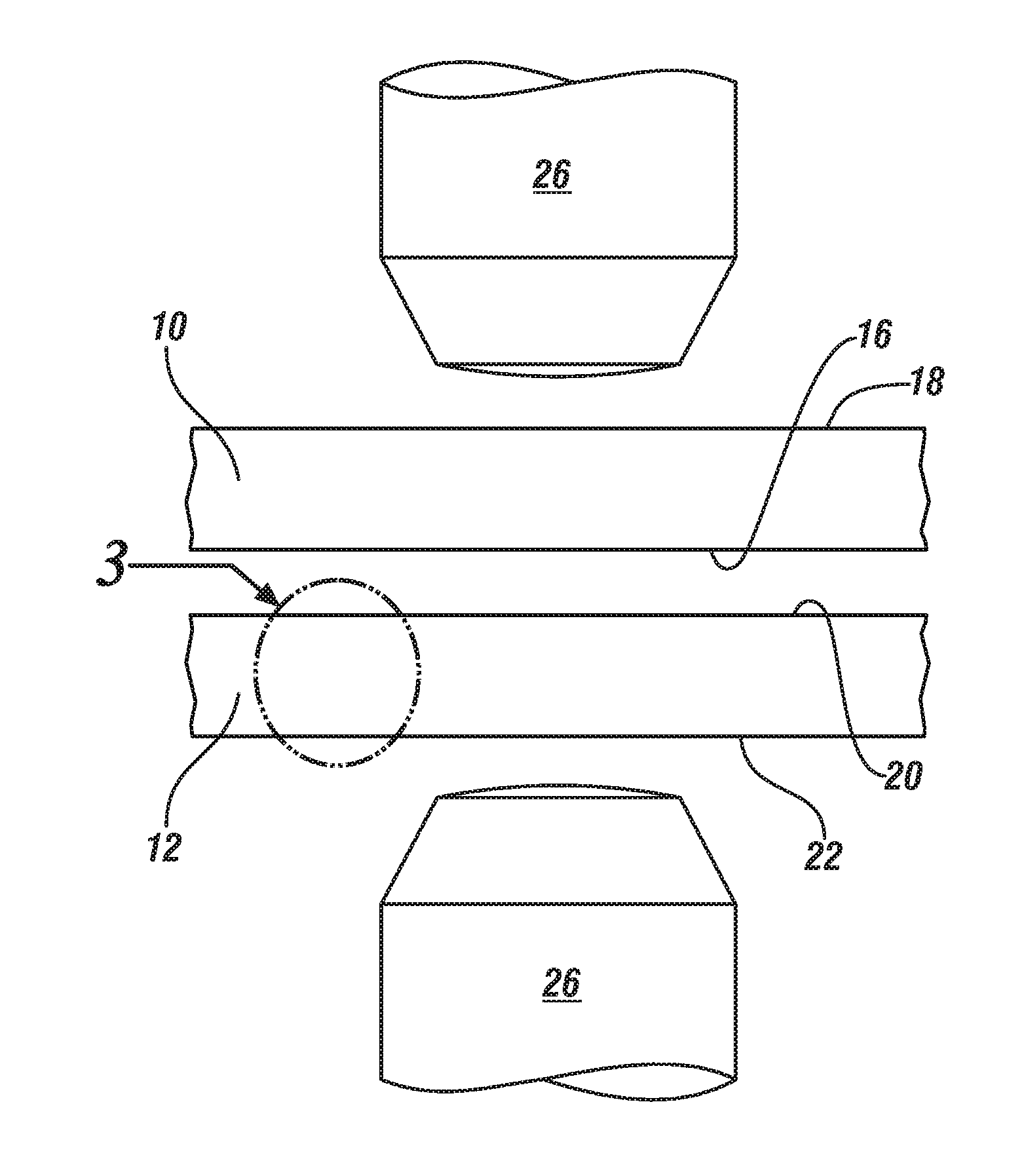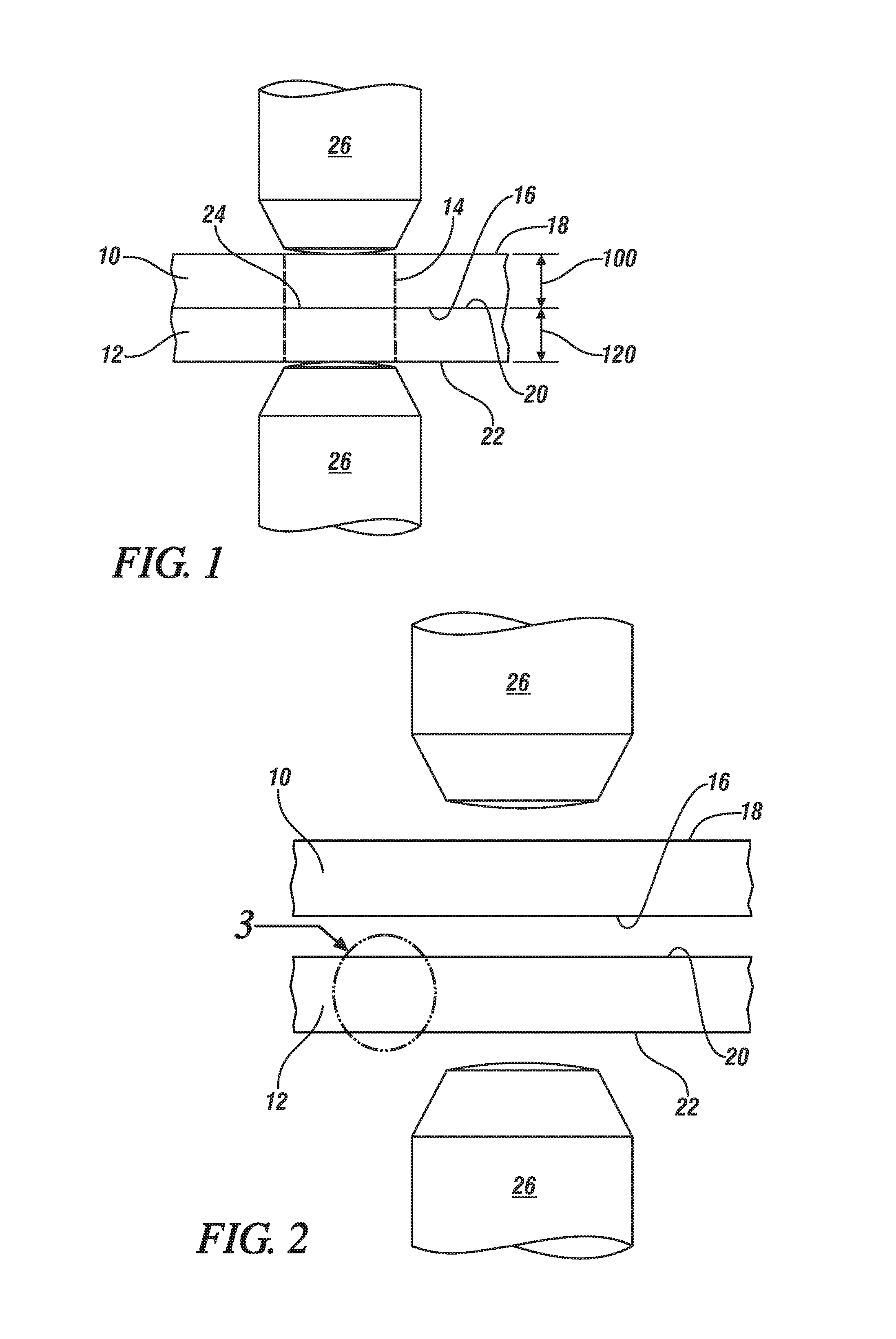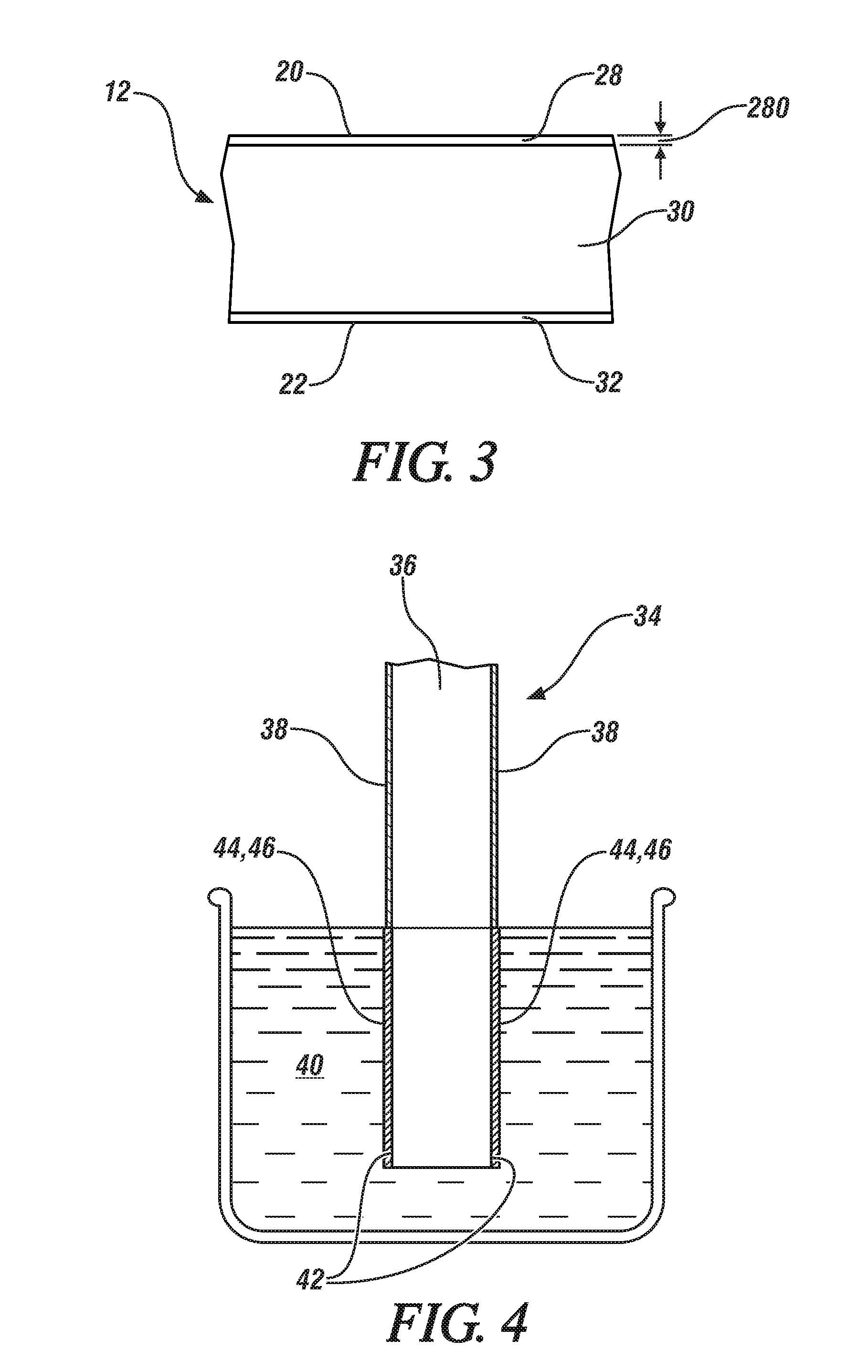Resistance spot welding of steel to pre-coated aluminum
a technology of resistance spot welding and aluminum, which is applied in the direction of welding equipment, welding/soldering/cutting articles, manufacturing tools, etc., can solve the problems of reducing the strength and ductility reducing the mechanical properties of the weld joint, and reducing the melting point, so as to achieve the effect of enhancing the resistance spot weld ability of steel workpieces and aluminum workpieces, and reducing melting points
- Summary
- Abstract
- Description
- Claims
- Application Information
AI Technical Summary
Benefits of technology
Problems solved by technology
Method used
Image
Examples
Embodiment Construction
[0020]FIGS. 1-3 generally depict a steel workpiece 10 and an aluminum workpiece 12 that are assembled for resistance spot welding at a predetermined weld site 14. The steel workpiece 10 is preferably a galvanized, or zinc-coated, low carbon steel. Other types of steel workpieces may of course be used including, for example, a low carbon steel or a galvanized advanced high strength steel (AHSS). Some specific types of steels that may be used in the steel workpiece 10 are interstitial-free (IF) steel, dual-phase (DP) steel, transformation-induced plasticity (TRIP) steel, and press-hardened steel (PHS). Regarding the aluminum workpiece 12, it may include an aluminum-magnesium alloy, an aluminum-silicon alloy, an aluminum-magnesium-silicon alloy, an aluminum-zinc alloy, or aluminum metal. Some specific aluminum alloys that may be used in the aluminum workpiece 12 are AA5754 aluminum-magnesium alloy, AA6022 aluminum-magnesium-silicon alloy, and AA7003 aluminum-zinc alloy. The term “workp...
PUM
| Property | Measurement | Unit |
|---|---|---|
| thickness | aaaaa | aaaaa |
| melting point | aaaaa | aaaaa |
| melting point | aaaaa | aaaaa |
Abstract
Description
Claims
Application Information
 Login to View More
Login to View More - R&D
- Intellectual Property
- Life Sciences
- Materials
- Tech Scout
- Unparalleled Data Quality
- Higher Quality Content
- 60% Fewer Hallucinations
Browse by: Latest US Patents, China's latest patents, Technical Efficacy Thesaurus, Application Domain, Technology Topic, Popular Technical Reports.
© 2025 PatSnap. All rights reserved.Legal|Privacy policy|Modern Slavery Act Transparency Statement|Sitemap|About US| Contact US: help@patsnap.com



